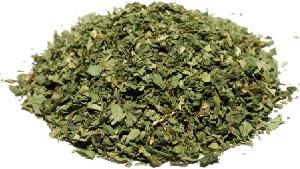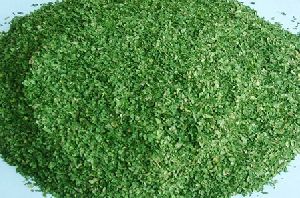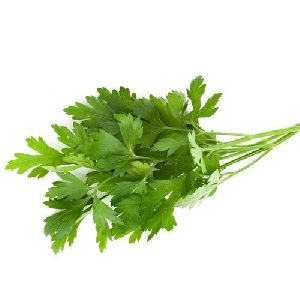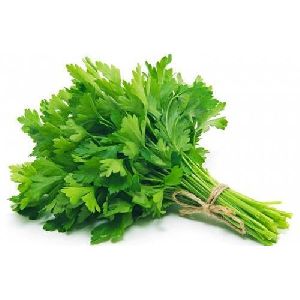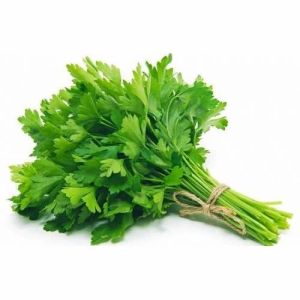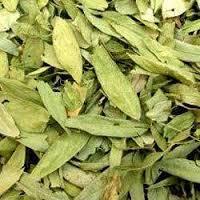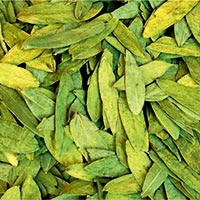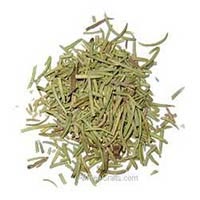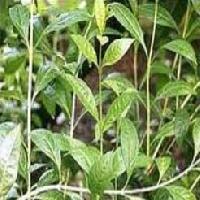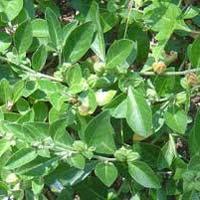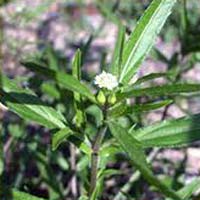Listing ID #3804175
Company Information
Ask for more detail from the seller
Contact SupplierParsley is universally regarded as the all purpose green garnish. It is by far the most commonly mentioned of herbs in recipes all over the world. Parsley though regarded as a humble herb – inexpensive and usually gracing the dinner table as a garnish. In recent years this simple and plentiful herb has gained its place in gourmet dishes and cooks are depending on parsley to provide flavor, texture and intensity to many recipes. Parsley provides the chefs of France and other European countries a versatile and tasty addition to traditional preparations.
Parsley is a bright green, biennial herb having flat or curled, ternately compound leaves which are used as seasoning or garnish. Though there are more than 30 varieties of this herb, the most popular are curly-leaf parsley and the more strongly flavored Italian or flat-leaf parsley.
Curly leaf parsley is usually used as a garnish. Many people feel that flat leaf parsley has a stronger flavor and this opinion is backed by chemical analysis which finds much higher levels of essential oil than what is found in the flat-leaved cultivators. Parsley derives from the Greek word meaning “rock celery” (parsley is a relative to celery).
A Brief History
Parsley is mentioned by the ancient Romans in the forth century BC. Two types, one with dense crowded leaves the other with open, broader leaves are described. Pliny, in the first century AD writes that there would not be a salad or sauce served without parsley.
The Greeks, on the other hand, didn’t eat it. It was considered sacred to the dead having reputedly sprung from the blood of their hero Archemorus. The Ancient Greeks crowned winners of major sporting events with wreaths of parsley. One rumor had it that you could bring about the demise of an enemy by plucking a sprig of parsley while speaking his name. However, it is used in the Hebrew celebration of the Passover as a symbol of rebirth. In Medieval times revelers placed it on their tables and around their necks to absorb food odors. It was also used as a poison antidote.
It was introduced into England from the Mediterranean, where it originally grew wild, in the 16th century and both the plain and curled variety is mentioned by McMahon in 1806 as being in American gardens. Parsley originated in the Mediterranean area and culinary historians have found evidence that it was cultivated in Sicily and Sardinia. The Neapolitan cooks in the Italian Naples maintain that their variety is the oldest and most flavorful. Referred to as Italian parsley, it is known for its pungent stems and is eaten in summer to replace celery. Since parsley is member of the celery family, it follows that its usage is much the same as this first cousin. Hamburg parsley is another variety that is grown for its root. In addition, there is curly parsley and flat-leaf parsley.
The Romans used parsley as seasoning and as a curative after those lavish banquets. Hercules wore garlands of parsley on special occasions as did the Greeks, who revered it and wove into a victor’s crown at the Isthmian games. Charlemagne maintained a generous supply of a cheese flavored with parsley seeds.
Selection and StorageOne should always go for fresh parsley over the dried form of the herb since it is superior in flavor. Parsley should be chosen based on the deep green in color and the crisp and fresh looking ones. The bunches which have leaves that are wilted or yellow should be avoided. In case one goes for the dried variety, then it is preferable to purchase organically grown parsley since this will ensure that the herbs have not been irradiated.
Fresh parsley should be kept in the refrigerator in a plastic bag. If the parsley is slightly wilted, either sprinkle it lightly with some water or wash it without completely drying it before storing in the refrigerator.
If one has excess flat leaf parsley, one can easily dry it by laying it out in a single layer on a clean kitchen cloth. Once dried, it should be kept in a tightly sealed container in a cool, dark and dry place. Curly leaf parsley is best preserved by freezing, as opposed to drying. Although it will retain most of its flavor, it has a tendency to lose its crispness, so it is best used in recipes without first freezing.
Serving TipsThere is hardly a savory dish that is not enhanced by parsley. This flavorful herb is used to enhance numerous dishes such as grilled racks of lamb, broiled steak, fish or chicken. It is also commonly used for outdoor grilling of meats, fish and vegetables when it is added to create a delectable crust.
Minced parsley is a visually appealing garnish for soups, stew, meat loaves and casseroles. Mixed with lemon rind and minced garlic, it becomes gremolata, an Italian garnish for ossoboca (braised veal shanks). It is a main component for Italian salsa verde (green sauce) for boiled meats and of Middle Eastern tabbouleh (cracked wheat, tomato and parsley salad). Parsley sprigs may be deep fried as a garnish for fried foods.


